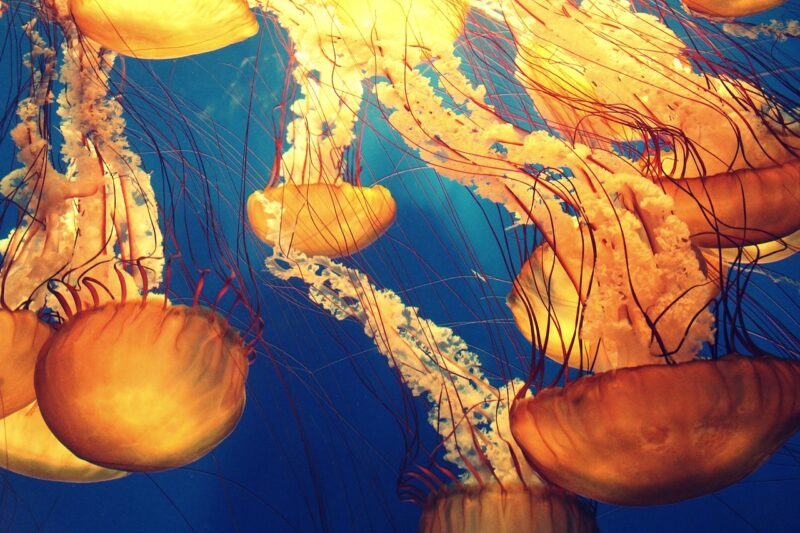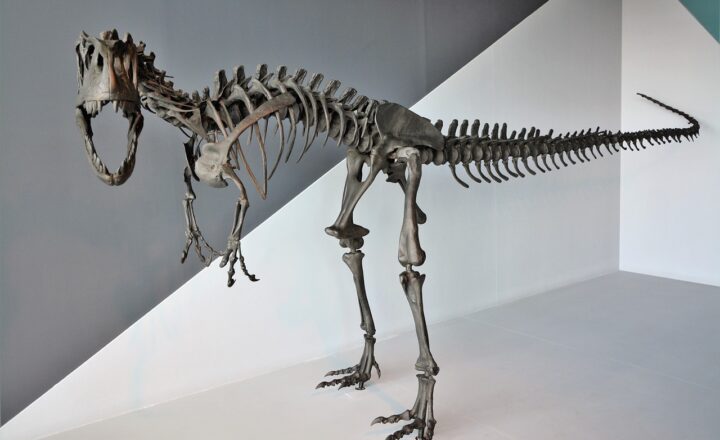
Before dinosaurs stomped on land, the oceans swarmed with incredible and diverse life forms. These ancient marine creatures, some of whom were truly colossal and fearsome, played a crucial role in shaping the evolutionary landscape of our planet. In this article, we will dive deep into the seas of prehistoric times and explore some of the fascinating ancient sea creatures that ruled the oceans before dinosaurs took the stage.
1. The Age of the Sea Creatures
The era we often refer to is known as the Paleozoic Era, which spanned from approximately 541 to 252 million years ago. During this time, the Earth underwent significant geological and biological changes. This era was characterized by the emergence of complex life forms in the seas, leading to the development of a rich and diverse marine ecosystem.
One of the defining features of this time was the Cambrian Explosion (around 541 million years ago), where a rapid increase in the variety of life forms occurred. With this explosion came some of the most iconic sea creatures the world has ever known.
2. The Mighty Trilobites
Trilobites are perhaps one of the most recognizable ancient marine creatures. They roamed the oceans for over 270 million years and were characterized by their hard exoskeleton, segmented bodies, and compound eyes.
Trilobites were highly diverse, with thousands of species identified, ranging in size from just a few millimeters to over 70 centimeters. These arthropods were primarily bottom-dwellers, scavenging for food in the marine sediment. Despite their hardiness, they faced a series of mass extinctions, eventually disappearing around 252 million years ago in the Permian-Triassic extinction event.
3. The Powerful Ammonites
Ammonites, which lived during the Mesozoic Era (roughly 240 to 65 million years ago), are often mistaken for fossils of modern squids or octopuses. These cephalopods are known for their distinctive spiral shells and were once abundant in the oceans. They displayed an immense variety of shell shapes and sizes, making them one of the most diverse groups of marine life ever.
Ammonites were prolific predators thanks to their agility and specialized feeding techniques. They played a significant role in the food chain, preying on smaller marine animals. In fact, their fossils remain some of the most recognizable and admired artifacts from the age of the dinosaurs, showcasing their importance and ecological influence.
4. The Majestic Ichthyosaurs
Ichthyosaurs were remarkable marine reptiles that resembled modern dolphins and swam in the oceans during the Mesozoic Era, flourishing around 250 to 90 million years ago. Reaching lengths of up to 20 feet (over 6 meters), these fast and agile predators had streamlined bodies, extensive flippers, and large eyes, which made them exceptional hunters in the ocean.
Being warm-blooded, ichthyosaurs gave birth to live young rather than laying eggs on land like most reptiles. This adaptation allowed them to thrive in the open seas, hunting fish, squid, and even smaller marine reptiles. Their fossilized remains continue to captivate scientists, offering keen insights into the evolution of marine life.
5. The Enigmatic Plesiosaurs
Plesiosaurs were another type of marine reptile that roamed the waters during the same era as ichthyosaurs. Recognizable by their long necks and broad bodies, these creatures are often depicted as the sea monsters of ancient lore. Their limbs evolved into flippers, allowing them to navigate the water efficiently.
Fossils suggest that plesiosaurs fed on a diet of fish and cephalopods. The long necks of some species likely enabled them to sweep through schools of fish or even catch prey that was out of reach for other creatures. Although they vanished around 66 million years ago, their intriguing morphology continues to inspire speculation and fascination among paleontologists.
6. The Predatory Mosasaurs
Mosasaurs were large marine reptiles that thrived during the Late Cretaceous period, peaking around 70 million years ago. These formidable predators could grow over 50 feet (15 meters) long and were well-adapted for life in the water. With elongated bodies, powerful jaws lined with sharp teeth, and an impressive tail, mosasaurs were among the top predators in their marine ecosystems.
They primarily hunted fish and other marine animals, including smaller mosasaurs. Their fossils reveal strong adaptations for both predation and swimming, showcasing their elegance and efficiency as hunters. Mosasaurs became extinct around the time of the dinosaurs’ disappearance, but their ecological dominance in the oceans remains a significant aspect of marine evolution.
7. The Bizarre Elasmosaurus
Elasmosaurus, a type of plesiosaur, is particularly famous for its extremely long neck, which could reach up to 14 feet (about 4 meters). Its small head and massive body made it unique among marine reptiles. The elongation of its neck is theorized to help it reach prey in the water column without exerting much effort.
Fossils of elasmosaurus have been found primarily in North America, indicating it swam the coastal waters of ancient oceans. These fascinating creatures further exemplify the diversity of life that existed long before the dinosaurs.
8. Conclusion
The ancient seas were once vibrant ecosystems bustling with life forms that dominated the oceans long before the rise of dinosaurs. Creatures such as trilobites, ammonites, ichthyosaurs, plesiosaurs, and mosasaurs hold a critical place in Earth’s evolutionary history. Their adaptations and unique features provide insights into the dynamics of ancient marine life and ecology.
Today, through fossil records and ongoing research, we continue to learn about these ancient inhabitants of the seas, shedding light on the complexities of life on our planet. The story of prehistoric marine life is not just a tale of extinction but also one of resilience and adaptation in the face of changing environments. By studying these ancient creatures, we gain a deeper understanding of evolution and the beautiful tapestry of life that has existed on Earth for hundreds of millions of years.







